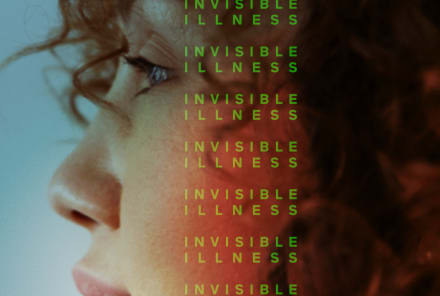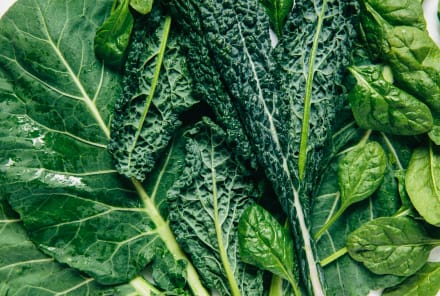Advertisement
I'm An Ayurvedic Practitioner & This Is The Dosha Question I Get All The Time


"What's the difference between my doshic constitution and my dosha that's out of balance?" As an Ayurvedic practitioner, this is the No. 1 question I get from clients.
Many of them have taken dosha quizzes and felt that sense of validation reading over their type, thinking, Yes, that is totally me. Then, after diving deeper, they've been confused to notice that some of the symptoms their body is experiencing do not align with the type they initially identified with.
At this point, I tell them that their doshic constitution, or who they innately are, is separate from their perceived doshic imbalances. Let's break down what that distinction means, and why it's so important.
What is a doshic constitution (aka prakruti)?
I like to think of a doshic constitution as similar to a natal birth chart you'd receive in an astrology reading.
It is a unique makeup of all three of the dosha types—vata, pitta, and kapha—given as a percentage (or pie chart) that reflects the energies and qualities that make up who you are as a person.
These energies are expressed through your physical structure, physiology, and personality. They do not change.
For example, an Ayurvedic counselor could assess you as 56% vata, 28% kapha, and 16% pitta. This means vata is dominant in your nature. You've noticed many of the vata qualities and energies present within you for the majority of your life. You still have pitta and kapha energies, but they are less dominant in your nature.
This percentage, and the way it is expressed, is completely unique to you. Even if someone else has the exact same percentage breakdown, the way that the doshas present themselves through that person will look different from the way they present themselves through you.
When you take a dosha quiz online, you're likely identifying your dominant dosha type. When you work with an Ayurvedic counselor, however, you are usually working to balance your doshic imbalance.
What is a doshic imbalance (aka vikruti)?
I like to think of a doshic imbalance as a transit reading in astrology. This is a reading of where the grahas (moon, sun, and planets) are in the sky right now and how they might be influencing how you feel.
Similarly, a doshic imbalance describes where there is an excess of a specific dosha in your life based on your current experiences. This is not expressed as a percentage or pie chart but rather can be thought of as more of a bar chart.
Using the example above, this same client can be 56% vata, 28% kapha, and 16% pitta by nature. However, their doshic imbalance could be an excess of pitta.
This person could be working a job that requires long hours, harbor anger at their parents for encouraging them to pursue a role that isn't in line with their dharmic path, and be drawn to foods and lifestyle activities that are fiery by nature. These are some of many influences that could increase the amount of fire within the individual, resulting in an excess of pitta.
The role of the counselor is to assist the client in pacifying the pitta so that their natural doshic constitution can be restored.
Unlike constitution, doshic imbalances are always changing. Everything that can be experienced in this lifetime has an energy behind it that can affect the mind, body, and soul. Foods, seasons, lifestyle, partnerships, work, travel, climate, and environment all affect the doshas.
A daily practice for staying balanced.
Though this distinction can be confusing at first, putting it into practice can be really simple and intuitive. The secret is shifting your awareness to recognize how you feel throughout the day.
Practice asking yourself these three questions every morning and evening for two weeks and notice the difference it makes in how you feel:
- How can I describe my current state of feeling and being? Use descriptive words like grounded, chaotic, mobile, rigid, cold, expansive, etc. If you note an emotion, describe the qualities of the emotion. If you note a physical sensation, describe the qualities of the sensation (i.e., Anxious would be "scattered, mobile, light, variable").
- If my current state of feeling and being does not feel good in my body, what are some opposing qualities that I want to experience? If you feel chaotic or disturbed, the desired qualities could be feeling grounded and still.
- What tangible things can I practice today that will shift me into experiencing the desired quality? I can go for a walk in nature to feel grounded, or practice three minutes of silent meditation to feel still.
With this simple routine, you can tap into your own healing power and practice Ayurveda at its most fundamental level. Let it be simple, and let it be fun! The more you practice, the more trust you cultivate in yourself.
Happy practicing.
This article was co-written by Angelica Neri.
Watch Next
Enjoy some of our favorite clips from classes
Enjoy some of our favorite clips from classes
What Is Meditation?
Mindfulness/Spirituality | Light Watkins
Box Breathing
Mindfulness/Spirituality | Gwen Dittmar
What Breathwork Can Address
Mindfulness/Spirituality | Gwen Dittmar
The 8 Limbs of Yoga - What is Asana?
Yoga | Caley Alyssa
Two Standing Postures to Open Up Tight Hips
Yoga | Caley Alyssa
How Plants Can Optimize Athletic Performance
Nutrition | Rich Roll
What to Eat Before a Workout
Nutrition | Rich Roll
How Ayurveda Helps Us Navigate Modern Life
Nutrition | Sahara Rose
Messages About Love & Relationships
Love & Relationships | Esther Perel
Love Languages
Love & Relationships | Esther Perel
What Is Meditation?
Box Breathing
What Breathwork Can Address
The 8 Limbs of Yoga - What is Asana?
Two Standing Postures to Open Up Tight Hips
How Plants Can Optimize Athletic Performance
What to Eat Before a Workout
How Ayurveda Helps Us Navigate Modern Life
Messages About Love & Relationships
Love Languages
Advertisement

Want To Be Metabolically Healthy? New Study Shows An Underutilized Approach
Molly Knudsen, M.S., RDN

Bounce Back Quickly After Workouts With This DIY Electrolyte Drink
Molly Knudsen, M.S., RDN

This Gave Me Osteoporosis At 32 & Here's What I Wish People Knew
AmiCietta Duche Clarke

New Study Shows This Vitamin May Lower Your Risk Of Alzheimer’s By 17%
Molly Knudsen, M.S., RDN

Want To Be Metabolically Healthy? New Study Shows An Underutilized Approach
Molly Knudsen, M.S., RDN

Bounce Back Quickly After Workouts With This DIY Electrolyte Drink
Molly Knudsen, M.S., RDN

This Gave Me Osteoporosis At 32 & Here's What I Wish People Knew
AmiCietta Duche Clarke

New Study Shows This Vitamin May Lower Your Risk Of Alzheimer’s By 17%
Molly Knudsen, M.S., RDN









